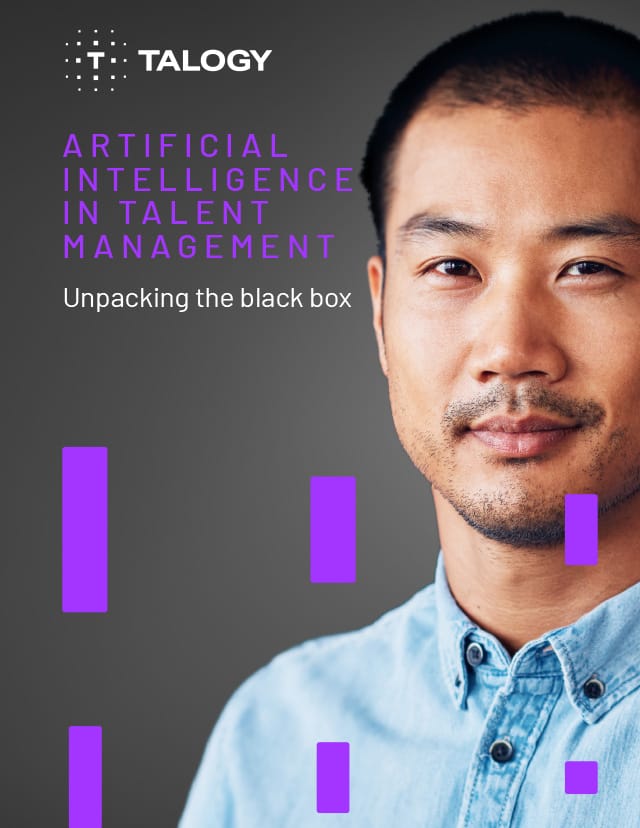Written by Dan Hughes, Director of International R&D
In our recent blogs, we discussed the impact of ChatGPT from two different perspectives. Firstly, we shared some key skills that employees will need to take full advantage of generative AI, such as ChatGPT, moving forward. This echoed themes from our previous research into changing success criteria in the future of work, where we predicted competencies like critical thinking, digital dexterity, learning agility, and change orientation would come to the forefront.
Secondly, we have explored some of the negative implications of candidates using ChatGPT or other AI-driven chatbots to cheat on talent assessments. This underlines the importance of maintaining good test security and incorporating a range of measures to mitigate this risk.
In this third blog, we will focus on some positive ways that generative AI like ChatGPT could be used to enhance talent assessment and development moving forward. We’ll explore the key considerations to think about, and some examples of how it could be used.
The natural language interface of tools like ChatGPT certainly makes AI more accessible than ever before, and with the introduction of tools like Microsoft Copilot, more and more people in the field of talent management will be able to take advantage of AI in their day-to-day work in the future.
Key considerations when using generative AI for talent assessment and development
It is important to remember that, like other major technological advancements over the years, the focus should be on where generative AI can supply a clear benefit over existing approaches, rather than just using it for the sake of it.
Six key factors to consider when you are looking to apply generative AI tools in talent selection and development are:
- Productivity – Will this increase the speed of performing certain talent assessment or development tasks and save valuable time?
- Scale – Will this enable certain approaches or tasks to be delivered at a much larger scale than would be possible with existing approaches?
- Consistency – Will this help to improve the reliability of talent assessment?
- Accuracy – Will this improve precision of measurement in talent assessment?
- Fairness – Will this improve fairness of outcomes for minority groups, reduce bias, or increase access for diverse groups?
- Engagement – Will this increase engagement for candidates in a hiring process or for employees undergoing a development activity?
Always keep these questions in mind when exploring new generative AI applications in talent assessment and development. At the same time, consider any negative consequences that introducing generative AI might have and how this will be evaluated or audited. For example, checking that using generative AI will not create biased outcomes is absolutely essential.
Some examples of applying generative AI in talent assessment and development
There are huge possibilities for taking advantage of generative AI to enhance hiring and employee development. Here are some interesting examples we have been exploring:
1. Assessment content generation
From our own research and application, ChatGPT can do a reasonable job of suggesting some initial content ideas for talent assessments, such as interviews, personality assessments, and situational judgment tests (SJTs). With other visual and audio-generative AI tools, there is also the opportunity to create multimedia assessment content at a faster pace than has been possible before, which can increase candidate engagement.
While it provides a useful starting point and can save some time, the content it generates also tends to have flaws, so human experts, such as I/O psychologists, need to review and refine it. It can also be repetitive at times, lacking the creativity of human content developers. And, of course, the same principles apply in developing talent assessments that they should be trialled and tested thoroughly to demonstrate evidence of reliability, validity, and fairness.
2. Chatbot-based assessment
The natural language interface of ChatGPT means it can be deployed as a chatbot interview assistant, to help to assess the personality or competencies of candidates. This could offer significant benefits for scaling interviews to larger volumes of candidates or assessing candidate personality in a more engaging format than questionnaires.
This type of application needs to be balanced with ensuring that the hiring process keeps some human-to-human interaction or touchpoints within it, to foster more candidate engagement. Also, it would be important to evaluate whether this approach can achieve the same or better levels of consistency and accuracy compared to existing assessment methods. There has already been some promising scientific research in this area, but there is still more research required.
3. Digital work coach
From a talent development side, an interesting application of generative AI is in providing personalised chatbot coaching, which can support someone in achieving their individual goals. A chatbot coach can ask questions to explore a specific work challenge the person is facing and help them to identify options, solutions, and an action plan for addressing the challenge.
This has significant potential to democratise coaching by providing it at a much wider scale than is possible with human coaching and as an on-demand service 24/7. At the same time, AI-based coaching is limited in capability and can’t replicate the qualities of human coaches, such as empathy and emotional intelligence. AI-powered coaching may be useful for supporting with narrow, targeted work challenges, while human coaches will remain essential for deeper-level coaching which requires a stronger connection with the coachee, an understanding of the nuanced context of work challenges, and an appreciation of the emotional impact.
Exciting times ahead!
These are just a few examples of applying generative AI in talent assessment and development. This is a hugely exciting time, and it will be interesting to see how the talent management space evolves as this technology continues to become more widely accessible and evolves in capability. Watch this space as we continue to explore the applications of AI!


